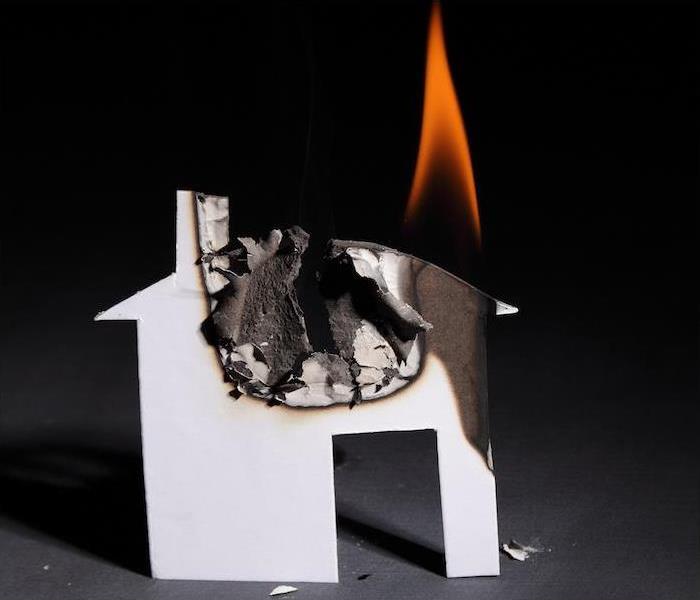The Same Things That Start a Fire Can Be Used to Stop It | SERVPRO® of North Fort Worth
1/24/2022 (Permalink)
 If your home or business has any damage, SERVPRO of North Fort Worth is ready around the clock to help you recover.
If your home or business has any damage, SERVPRO of North Fort Worth is ready around the clock to help you recover.
Quick, think of a 3D triangle. You’ve probably thought of one of two shapes—either a pyramid, which has a square base and four triangular sides, or the topic of today’s geometry lesson/fire safety blog, a tetrahedron, which has four total sides, all of them triangles.
See, scientists use a visual aid called the fire tetrahedron to depict the four essential elements of every fire. These four things must happen if a fire is to ignite and spread—which gives us a window into reactive fire safety as well.
The 4 Things a Fire Needs to Live
Fuel. Fire without something to burn is simply a fire in the air—and, well, that can’t happen. Anything that can burn can be a source of fuel for fire.
Heat. Everything that can be a fire’s fuel source has a flash point—a point at which it gets hot enough that it can catch fire. The reaching of this flash point is key to a fire’s ignition.
Oxygen. As a fire burns its fuel, it requires oxygen to keep going. The consumption of the oxygen around the fire is a crucial element, because the fire has to have it in order to perpetuate itself.
Chemical Chain Reaction. The fuel, the heat and the oxygen work in series to form a chain reaction—a self-repeating series of chemical events that keep the fire going until it’s interrupted by one of the following methods.
The 4 Ways to Stop a Fire
Cool it. Ask most people how to stop a fire, and the first answer they’ll give you is, “Pour water on it.” Chemically, the water doesn’t make much difference, but what it’s good for is quickly cooling a fire’s fuel source and restoring a thermal balance.
Smother it. Have you ever wondered why “stop, drop and roll” actually works? It works by smothering a fire on your clothing, thus depriving it of the oxygen it has to have to survive. The same goes for fire blankets and most fire extinguishers.
Starve it. When a fire runs out of food, it has to stop burning. This can be accomplished either by removing existing fuel sources or cutting the fire off from fuel sources into which it can expand.
Interrupt the chain reaction. Certain chemicals and elements have a way of tripping up the chain reaction, causing a breakdown in the fire mechanism by negating oxygen or otherwise disrupting the process. It seemed like the compound halon was going to be the great fire savior, because it is extremely effective in this way. But it has a negative impact on the ozone layer and has been banned from future production. Other elements are being used in its place to a similar, if lesser, effect.
If the fire tetrahedron makes a wreck of your home or business, we’re ready around the clock to help you recover. Contact SERVPRO anytime for fast, thorough cleanup and recovery after a fire.






 24/7 Emergency Service
24/7 Emergency Service